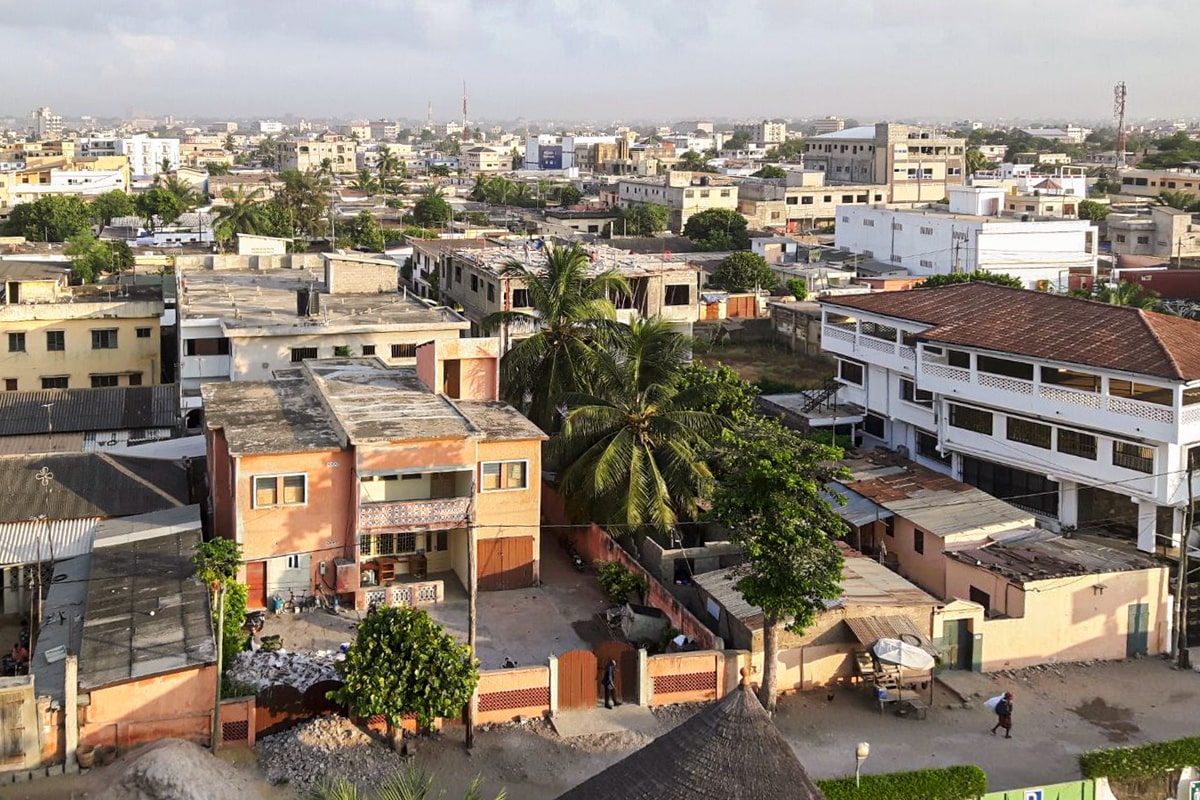Lomé is the vibrant capital of Togo, located on the shores of the Gulf of Guinea in West Africa. This city blends African traditions, colonial architecture, and a fast-paced modern lifestyle. It is known for its colorful markets, religious and ethnic diversity, and dynamic urban contrasts. Lomé is not only Togo’s political and economic hub but also a gateway to the African world for travelers and researchers. Here is a collection of fascinating and educational facts that reveal the city’s rich character and cultural depth.
- Lomé is both the capital and the largest city of Togo. It is home to more than 2 million people, making it the most populous urban center in the country. The city plays a crucial role in the nation’s political, economic, and cultural affairs.
- Situated directly on the Gulf of Guinea, Lomé holds strategic importance as a trade center. Its port is one of the largest and most modern in West Africa, handling the export of phosphates, coffee, cocoa, and palm oil. It serves as a vital trade gateway for Togo and neighboring countries.
- French is the official language in Lomé, as in all of Togo. However, local languages such as Ewe, Kabiyé, and Mina are widely spoken in daily life. This linguistic diversity reflects the city’s multicultural identity.
- Lomé is home to one of the world’s most famous fetish markets. The Akodessewa market offers amulets, animal skulls, dried herbs, and ritual items used in traditional medicine and voodoo practices. It attracts both locals and curious visitors interested in African spirituality.
- The city’s architecture blends colonial French styles with traditional African elements. In the city center, early 20th-century buildings such as churches and former administrative offices remain standing. These coexist with modern office towers and commercial complexes.
- Despite its hot climate, Lomé is filled with greenery. Palm trees, baobabs, and ornamental plants line the streets, and the city features parks, a botanical garden, and scenic coastal areas. Green spaces play a vital role in urban life.
- Lomé is the educational center of Togo. The University of Lomé, established in 1970, is the country’s leading institution of higher learning. The city also hosts numerous colleges, vocational schools, and private universities.
- One of the most iconic places in Lomé is the Grand Marché, or Great Market. It offers fabrics, spices, fruits, handmade crafts, and jewelry. The market is considered the heartbeat of the city’s daily life and commerce.
- The main form of transportation in Lomé is the motorcycle taxi, known locally as zemidjé. It is a fast and affordable way to move around the city. Other options include taxis, buses, and private minivans.
- Lomé is known for its religious tolerance and diversity. Christians, Muslims, and followers of traditional African religions coexist peacefully. Religious festivals are often celebrated together, fostering unity and mutual respect.
- The city has a rich musical culture that mixes traditional rhythms with contemporary afro-pop influences. Lomé hosts music festivals, concerts, and street performances throughout the year. Drums, xylophones, and vocal improvisation are central to the city’s soundscape.
- Lomé operates a free economic zone that attracts foreign investment and promotes industrial development. The zone supports industries such as packaging, textiles, and food processing. It significantly boosts the country’s export capacity.
- Traditional crafts such as pottery, weaving, and jewelry making are thriving in Lomé. Many artisans use natural materials and centuries-old techniques. The city is considered a center for applied arts in Togo.
- Lomé features beautiful beaches that stretch along the coastline. These beaches are popular with both tourists and locals, especially on weekends. The most famous include Robinson Beach and the beaches near Ganiko.
- The city hosts numerous charitable organizations and community initiatives. They focus on healthcare, education, women’s rights, and environmental protection. These efforts help make Lomé a humanitarian as well as a political capital.
- The cuisine in Lomé is flavorful and rich in spices. Popular dishes include fufu, rice with sauce, grilled meats, and fish soups. Street food is common, but high-end restaurants also offer traditional and fusion dishes.
- Every Saturday, the city celebrates a vibrant fabric festival. Locals dress in colorful traditional attire to express cultural pride and national identity. The event is one of the most visually striking traditions in the city.
- Lomé is one of the few African cities with a voodoo museum. The museum features masks, drums, ritual artifacts, and explanations of ceremonies practiced by the Ewe and other ethnic groups. It provides insights into regional beliefs and spiritual practices.
- The Gnassingbé Eyadéma International Airport connects Lomé with Europe, North Africa, and neighboring countries. It serves as a key transport hub in West Africa. The airport strengthens the city’s regional and international connectivity.
- Originally a small fishing village, Lomé grew rapidly during the colonial period. It became the capital of independent Togo in the 20th century. Today, it is a fast-growing city that balances historical heritage with modern ambition.
Lomé is a city where tradition and progress go hand in hand, where history meets innovation, and where community and culture flourish side by side. These interesting facts highlight the diversity and uniqueness of Togo’s capital. You may not have known just how vibrant and multilayered Lomé truly is. Exploring the fascinating facts about Lomé opens a gateway to the colorful and complex world of West Africa.





